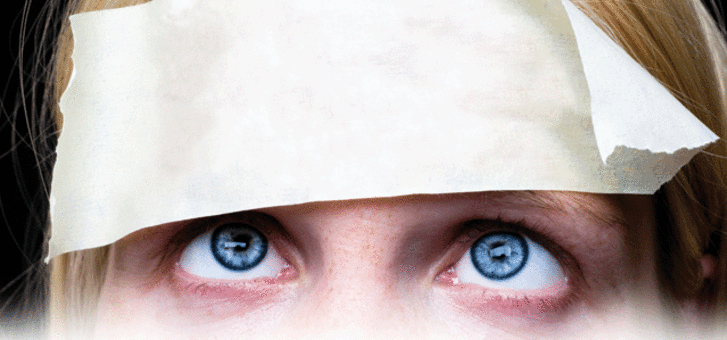I hate the gym! And I know that probably isn’t the best way for a health coach to begin an article; it isn’t that gyms are bad as such, I just don’t like them.
My personal trainer puts me on a treadmill and uses it like a form of torture. I’m just getting into a rhythm when she hits a couple of buttons and it goes faster and steeper.
I remember one time when she was feeling a little more sadistic than usual. I felt like I was trying to sprint up Mount Kosciuszko! Eventually, when I complained of a crushing chest pain, she eased it back. Then I quietly collapsed by the side of the machine for 30 minutes, exhausted and fighting for breath.
A day or two later, I had a nightmare. I was on a treadmill or, as it was called in the dream, a dreadmill. It kept getting faster and faster, regardless of how much I begged and pleaded for mercy. Faster, faster, faster! I couldn’t grasp the handles and began slipping backwards as the machine raced me toward oblivion.
I woke up screaming, sweaty and cramped, clutching the bedclothes like a drowning man clinging to a lifeguard. I have not forgotten that dream. And I haven’t been excited about gyms since.
You understand, I’m sure. Because we’re on just such a machine—and my guess is that you’re on it without life support. This machine is called “modern life.” Many people find their life is becoming a treadmill of terror. They’re running and can’t keep up. They wanted it all and wanted it now, and now they’re paying the price!
Fast food 24–7; instant cash from the ATM; downloadable music; internet shopping; real-time news and weather; BlackBerries, iPads and iPhones so people can have their e-mail anywhere they go—this need for speed encroaches on every aspect of life in our twenty-first century Western culture. The dreadmill we call life is getting harder, for getting ahead is an unending, high speed, uphill exercise.
Bobby McFerrin’s one-hit wonder, “Don’t Worry, Be Happy,” is an iconic if irritating song, but it contains many pertinent lyrics that got lost when the song evaporated from our minds. Lines such as “When you worry, your face will frown and that will bring everybody down,” and “In every life we have some trouble; when you worry, you make it double.”
No matter what happens in life, we can all expect trouble some of the time. Even when we rid ourselves of everything that gets in our way, there will still be external factors that intrude to make it difficult.
To get through troubled times and the inevitable stress that life throws at us, we need techniques that help us remain calm and mentally strong so that we can avoid the negative effects that chronic stress causes.
Some of these techniques are well known to you, others perhaps not so. But essentially, from the simplest to the most difficult, they all stem from a conscious decision to take control of your life’s stresses.
Are you ready to take control of them? If so, then here are some suggestions.
Breathe deeply
This is the simplest stress-management tool. It may sound a little silly since we obviously breathe all the time, but we usually take only shallow breaths, which means we don’t fill or use our lungs to their full capacity.
When we deliberately take slow, deep breaths, we increase the amount of air going in and this allows more oxygen to enter the bloodstream. This fuels our cells better and helps them do their jobs more efficiently. The special stress benefit is that this deep breathing sets in motion a physiological mechanism that slows our heart rates.
Meditation
Meditation takes the techniques of breathing one step further. Meditation involves deliberately switching your brain’s focus to something simple, in the present, shutting off the cares of the world.
Meditation soothes the mind, which is excellent for reducing stress and can help revitalise and refresh your mind. Prayer is a form of meditation and even though you may not meditate an entire day, a Sabbath—when you turn aside from life’s ordinary duties—helps relieve stress on your mind. Sitting quietly watching the waves on the sea shore and seagulls swirling above works somewhat the same.
Imagination
This is a step beyond meditation. Instead of focusing on something you can see or hear, let your mind wander to images and feelings that are not present to your senses. These images and feelings should be pleasant and relaxing. Some people describe this technique as a vivid daydream.
To get started, sit or lie in a comfortable position. Close your eyes and start to breathe slowly and deeply. Once you begin to relax, imagine your favourite scene. Imagine it in as much detail as possible and try to involve all five of your senses. Imagining these soothing scenes will replace the harassing thoughts of your daily routine with pleasant ones. Try thinking about a hike in the mountains with your family, an upcoming vacation or a time in the past when you enjoyed a hearty laugh over a good joke.
Devotional time![]()
Feelings of shame, guilt or failure are major causes of stress. It’s easy to think that God rejects you because of something you’ve done. A good devotional life such as Bible reading, especially the psalms and the words of Jesus, can help to relieve these causes of stress.
Visit a religious bookstore and pick up a devotional book or two and set aside some time each day to read them. When you pray, imagine yourself sitting across from Jesus in your front room and you’re chatting with Him the way you would talk to a close friend—because that’s what He really is!
Goal setting
This strategy builds on the techniques for using your imagination, but instead of creating images of a rainforest or tropical paradise, you imagine yourself achieving goals. This could be anything from improving your health to closing a deal or hitting that perfect drive from the first tee. It’s a fact that golfers—good ones, anyway—use this strategy all the time.
Muscle relaxation
Progressive muscle relaxation (PMR) is similar to meditation except that you contract, hold and then relax your body’s various muscle groups in turn. You can do this at the same time that you’re doing your breathing exercise. Tighten and then relax the muscles in your feet first, then work your way up your calves and thighs, tummy, chest, arms and neck. This will help to pump the blood from your body into your lungs. The deep breathing oxygenates this extra blood, giving your brain a burst of oxygen, and that helps your nerves to work better. You can even do this while sitting in a stressful meeting; or if you’re tense while trying to get to an appointment on time, try tightening and relaxing your muscles as you sit at a stoplight.
Exercise
Physical exercise is an excellent form of relaxation, with benefits for your body as well as for your mind. You can adapt it to your schedule, and it’s usually free. You don’t need a lot of expensive equipment. The downside is that it isn’t always possible (you can’t go jogging while you’re driving in your car or sitting in an aeroplane), but as a daily discipline, it will enhance your physical and emotional wellbeing.
The first benefit of exercise is physical. It gets your heart pumping, your blood flowing and your lungs working to their full capacities. Exercise will help to physically release any tension that you feel and beating a punching bag or running hard for a while can give you a physical release. But more important, it encourages the release of endorphins in your brain, which help you to feel great and reduce your stress.
Music
The right kind of music will soothe your mind. Hard rock and loud beats will actually increase your stress level, but classical music like Vivaldi’s The Four Seasons and gentle love songs will help you to relax. You can also try recordings of ocean waves, the wind blowing in the trees or bird calls in a rainforest.
Our modern way of life can be stressful. So try these suggestions the next time you feel tense or anxious, and step off the dreadmill.






